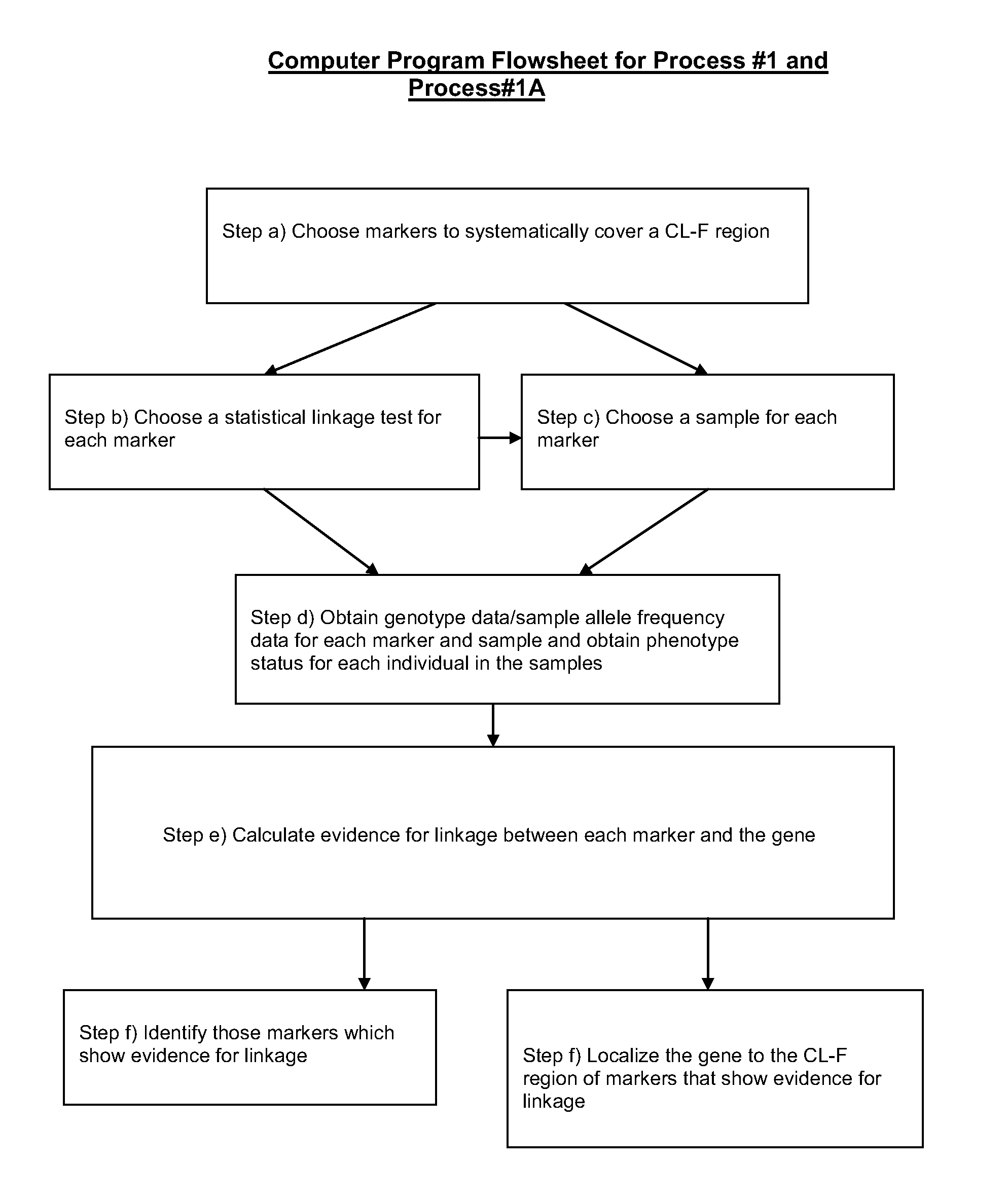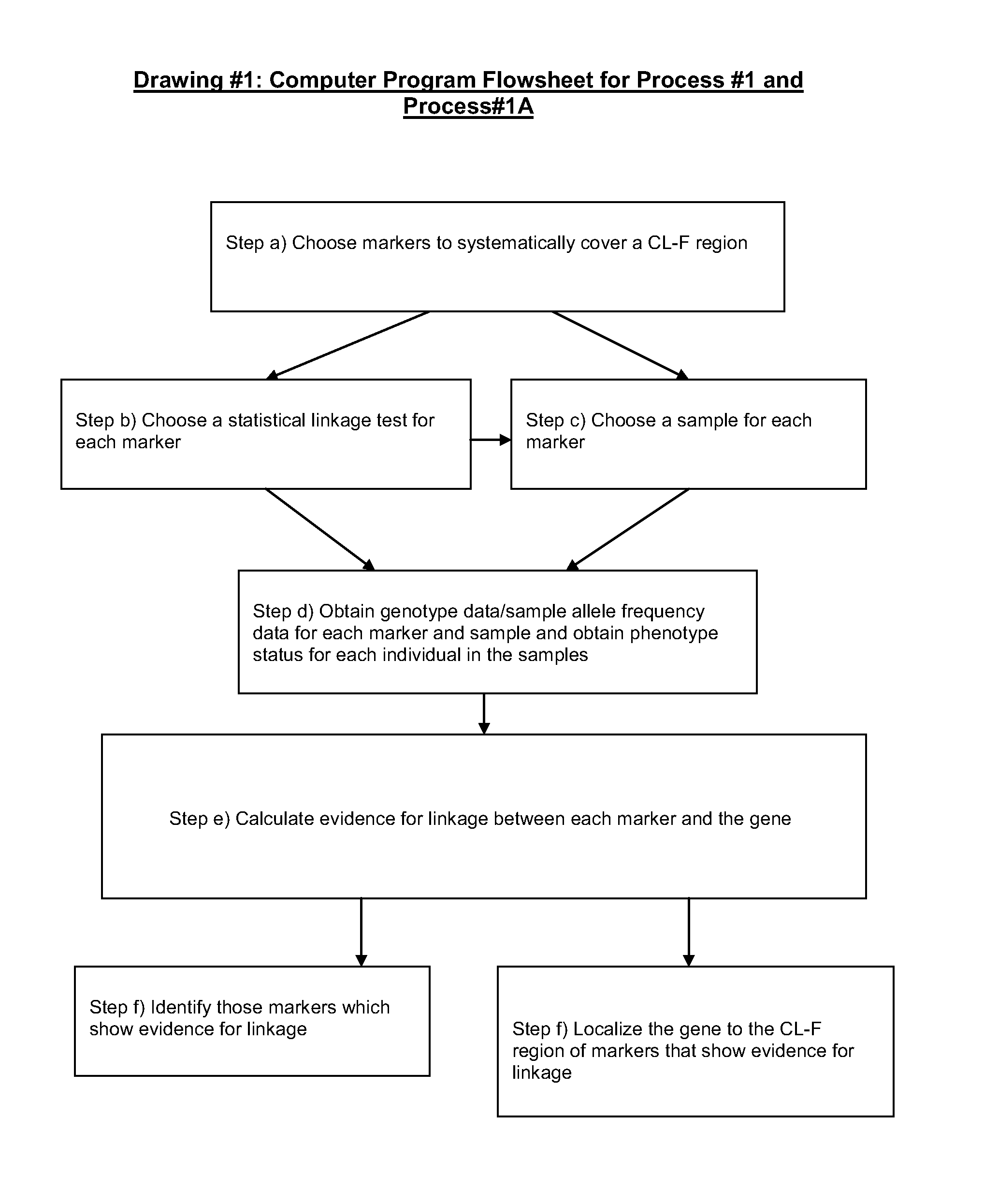Two-Dimensional Linkage Study Methods
a linkage study and two-dimensional technology, applied in the field of molecular biology, can solve the problems of unfavorable bi-allelic markers with less common allele frequencies, unfavorable bi-allelic markers, and limited power of conventional linkage study techniques to localize trait-causing genes (trait-causing polymorphisms) of modest effect, and achieve the effect of increasing the power of linkag
- Summary
- Abstract
- Description
- Claims
- Application Information
AI Technical Summary
Benefits of technology
Problems solved by technology
Method used
Image
Examples
example 1
[0164 of ApparatusGd / Safd#1: An apparatus for obtaining genotype data / sample allele frequency data for each bi-allelic marker of a group of two or more bi-allelic covering markers in the chromosomal DNA of one or more individuals of a sample, wherein the genotype data / sample allele frequency data is sample allele frequency data, comprising:
a) means for determining information on the presence or absence of each allele of each bi-allelic marker of a group of two or more bi-allelic covering markers in the chromosomal DNA from one or more individuals of the sample, a CL-F region being N covered to within the CL-F distance [1.0 cM, 0.15] by the two or more bi-allelic covering markers, wherein N is an integer number greater than or equal to 1; and
b) means for transforming the information of step a) into sample allele frequency data for each marker of the group.
[0165]Example 2 of ApparatusGd / Safd#1: An apparatus for obtaining genotype data / sample allele frequency data for each bi-allelic m...
PUM
| Property | Measurement | Unit |
|---|---|---|
| frequency | aaaaa | aaaaa |
| length | aaaaa | aaaaa |
| allele frequency | aaaaa | aaaaa |
Abstract
Description
Claims
Application Information
 Login to View More
Login to View More - R&D
- Intellectual Property
- Life Sciences
- Materials
- Tech Scout
- Unparalleled Data Quality
- Higher Quality Content
- 60% Fewer Hallucinations
Browse by: Latest US Patents, China's latest patents, Technical Efficacy Thesaurus, Application Domain, Technology Topic, Popular Technical Reports.
© 2025 PatSnap. All rights reserved.Legal|Privacy policy|Modern Slavery Act Transparency Statement|Sitemap|About US| Contact US: help@patsnap.com



